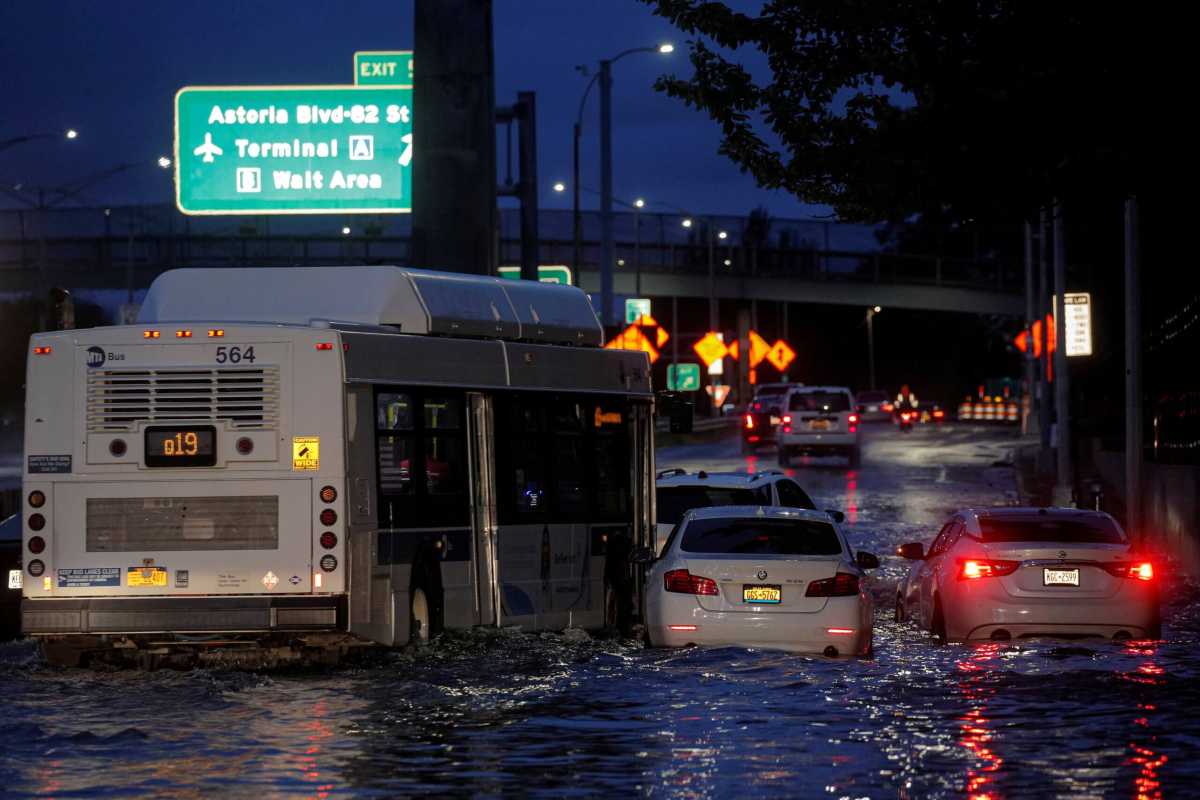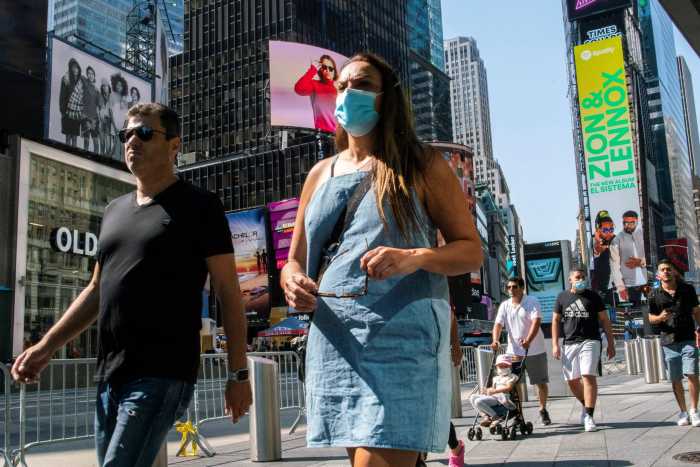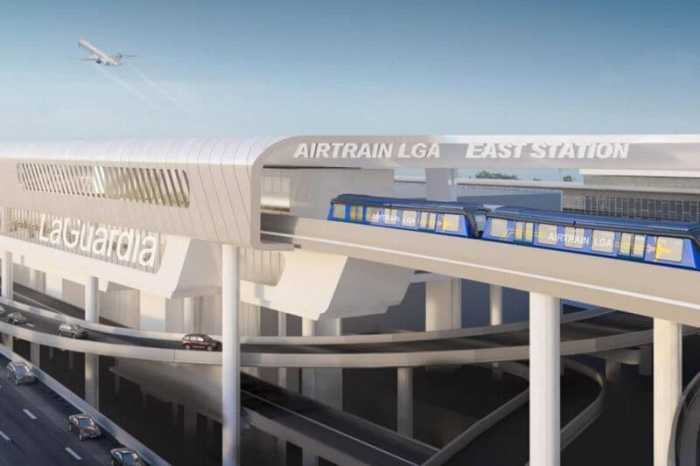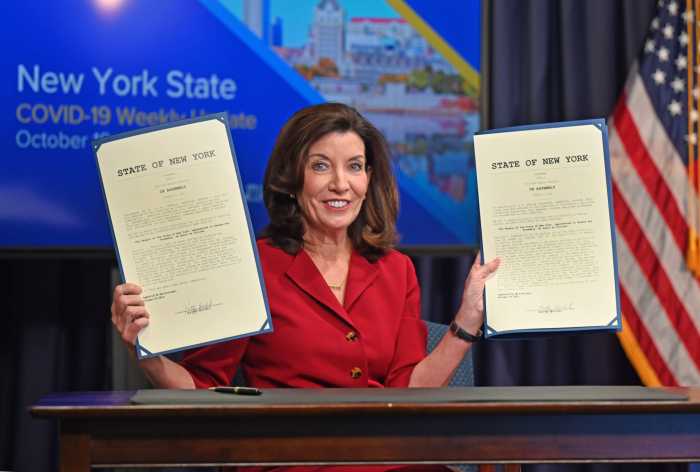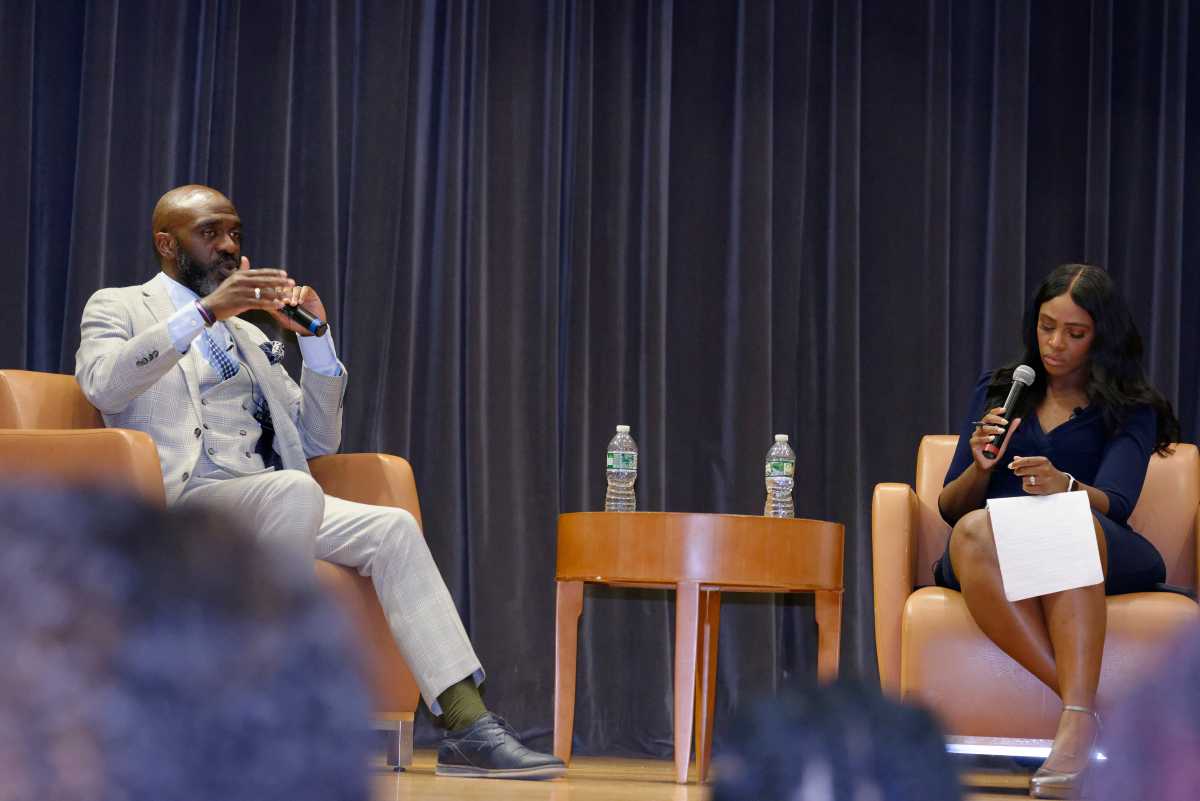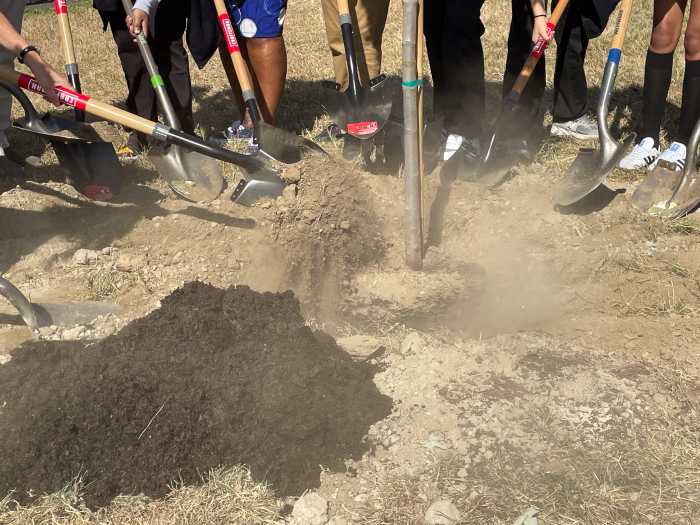New York’s mass transit system chugged along another bumpy ride in 2021, from leadership shuffles against the backdrop of political scandal in Albany around Governor Andrew Cuomo’s fall from grace, to natural disasters that brought the aging subway system to a standstill.
But things started looking up as more and more straphangers returned to rails and buses in a city slowly emerging from the devastating COVID-19 pandemic.
A separate pandemic of traffic violence raged on Big Apple’s streets, which remained deadly and plagued by shocking crashes, setting morbid records for Mayor Bill de Blasio’s final year in office.
Ridership and service rebound
The Metropolitan Transportation Authority logged slowly returning passenger numbers over the past year, starting at 26.6% of pre-pandemic levels with 614,497 riders on New Years Day, up from a low point of 6.5% in April of 2020.
Then-Governor Andrew Cuomo’s nightly shutdown of the subways between 1-5 a.m. — the first in its 116-year history – to disinfect train cars and boot the unhoused from the system continued into the new year, but the governor scaled it back to just two hours from 2-4 a.m. in February and brought back 24-hour service on May 17, more than a year after the initial closure.
As the new COVID-19 vaccines began rolling out over the coming months and the city started welcoming back office workers, the MTA cracked 2 million riders for the first time on April 8 and peaked with the highest rate so far at 74.3% of pre-COVID ridership on Nov. 21 and the highest number at 3.44 million commuters on Dec. 9.
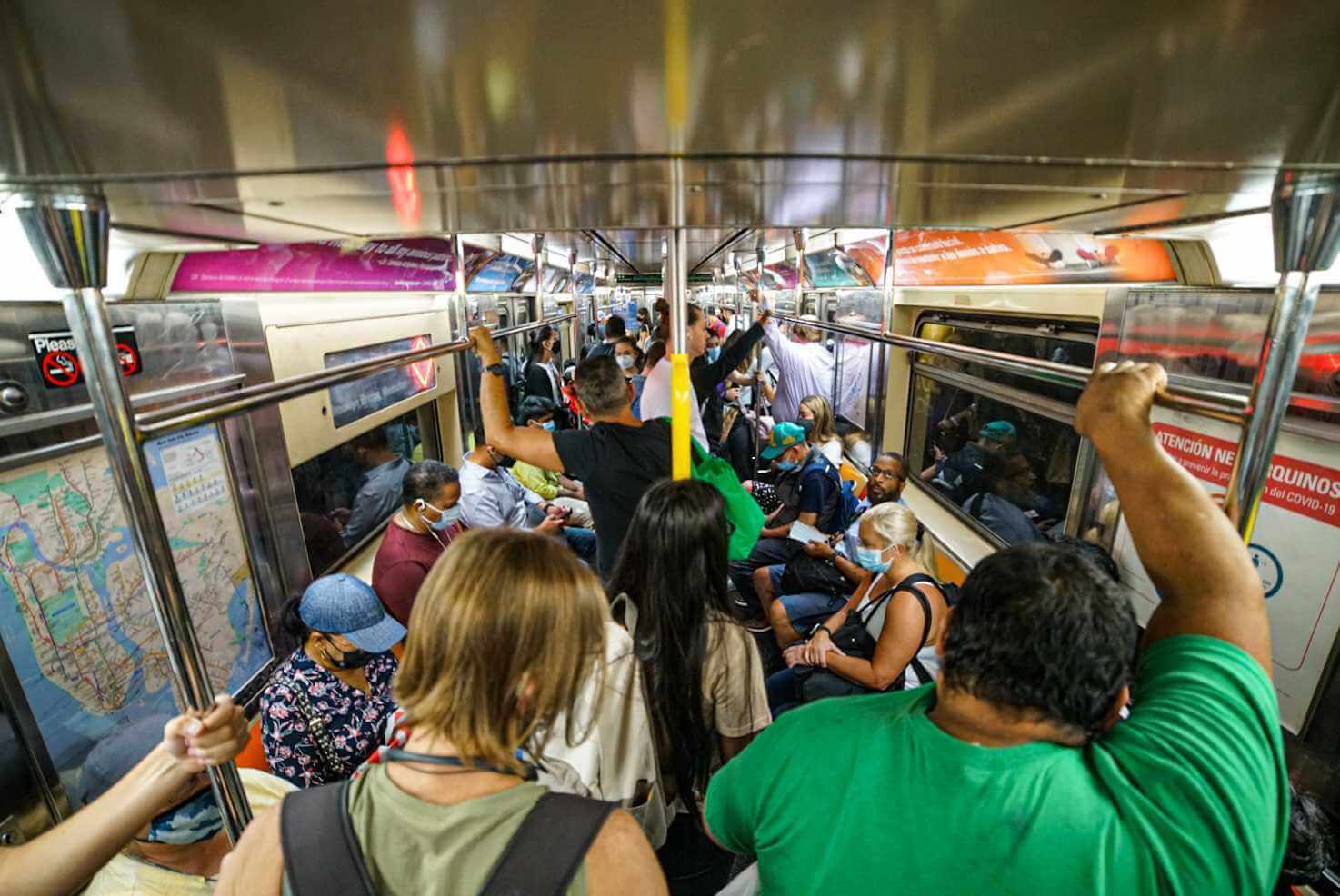
Despite federal pandemic rescue packages staving off “doomsday cuts,” MTA budget honchos warned that the agency will still have to do some “right-sizing,” a euphemism for service cuts, in order to stave off a $1.4 billion deficit once the money from Washington dries up in 2025.
In order to lure back more “customers,” as the MTA calls its riders, transit leaders announced a discount campaign in December, bringing a first-ever weekly fare cap for commuters using the OMNY tap payment starting in March of 2022, along with deals on the commuter rails.
The new Governor Kathy Hochul pushed back a fare hike until at least mid-2022, after previous ticket price increases were abandoned at the beginning of the year.
Climate chaos
Extreme weather events brought the city’s transit system to a standstill with meteorologists twice recording the wettest hour on record in the Five Boroughs.
Remnants of Hurricane Ida poured “Niagara Falls-level” rain onto the city and flooded the subways — with water rushing out from one subway platform manhole like a geyser — in the beginning of September, costing the agency up to $100 million to pump it dry.
The shutdown came just days after half of all subway lines went out overnight due to someone at New York City Transit’s Midtown nerve center known as the Rail Control Center accidentally hitting a power-off switch.
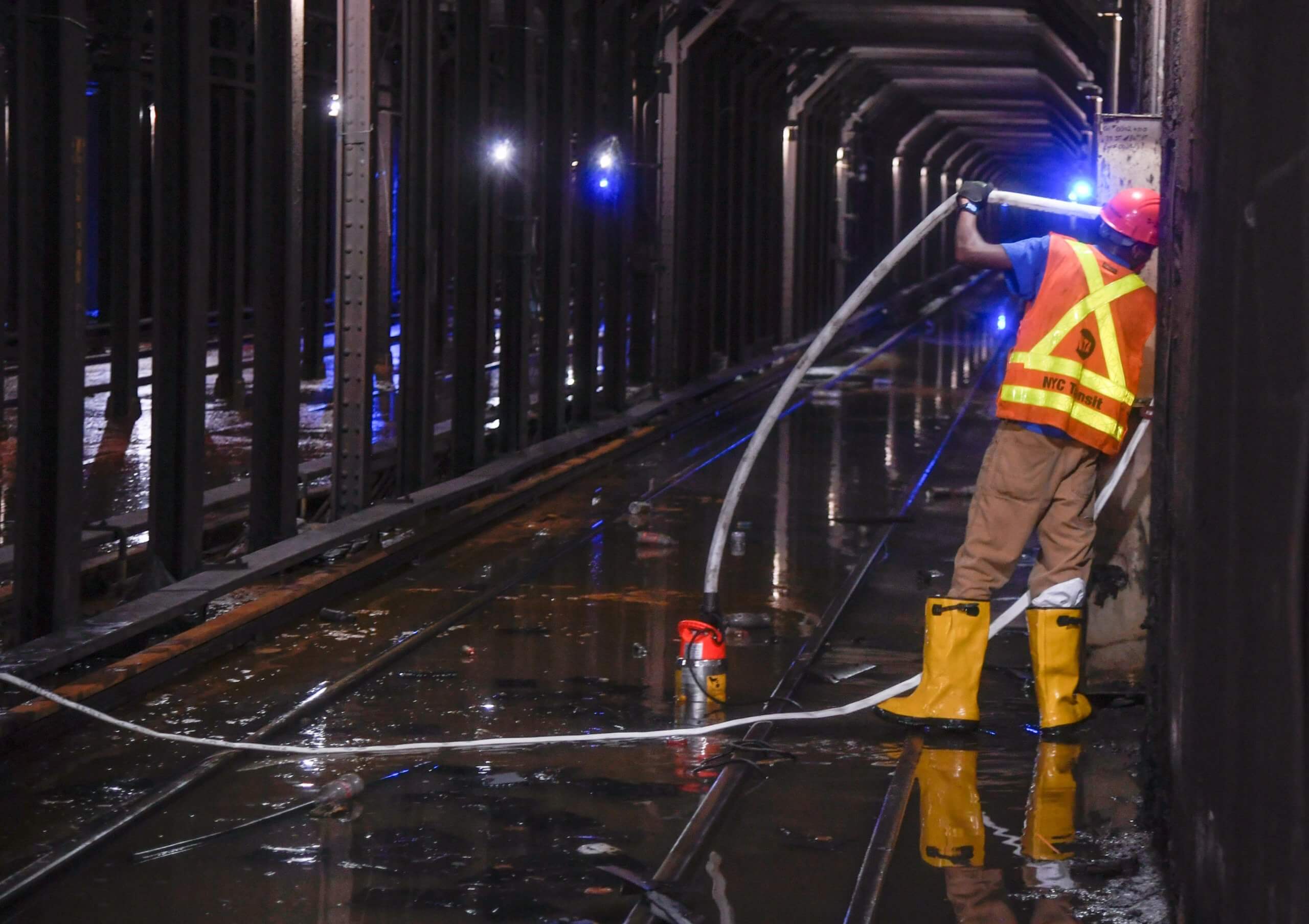
In early July flash floods ahead of Tropical Storm Elsa filled several stations uptown and in the Bronx, forcing riders to wade through waist-high water.
The repeat deluges led to MTA leaders focusing on street flooding as a major issue in addition to coastal surges that were devastating during Hurricane Sandy back in 2012.
Turbulence at the top
MTA’s leadership underwent dramatic changes thanks to a failed attempt by Cuomo to split the top job in two via an 11th-hour law change, aiming to replace outgoing chief Pat Foye with MTA Construction and Development big Janno Lieber as CEO and interim New York City Transit President Sarah Feinberg as the first woman chairperson.
The bifurcation bill didn’t survive the state Legislature’s budget negotiations, but Lieber got the role in an acting capacity after Foye bowed out, and Feinberg left the agency with the head of buses Craig Cipriano taking over her role in charge of the city’s subways and buses.
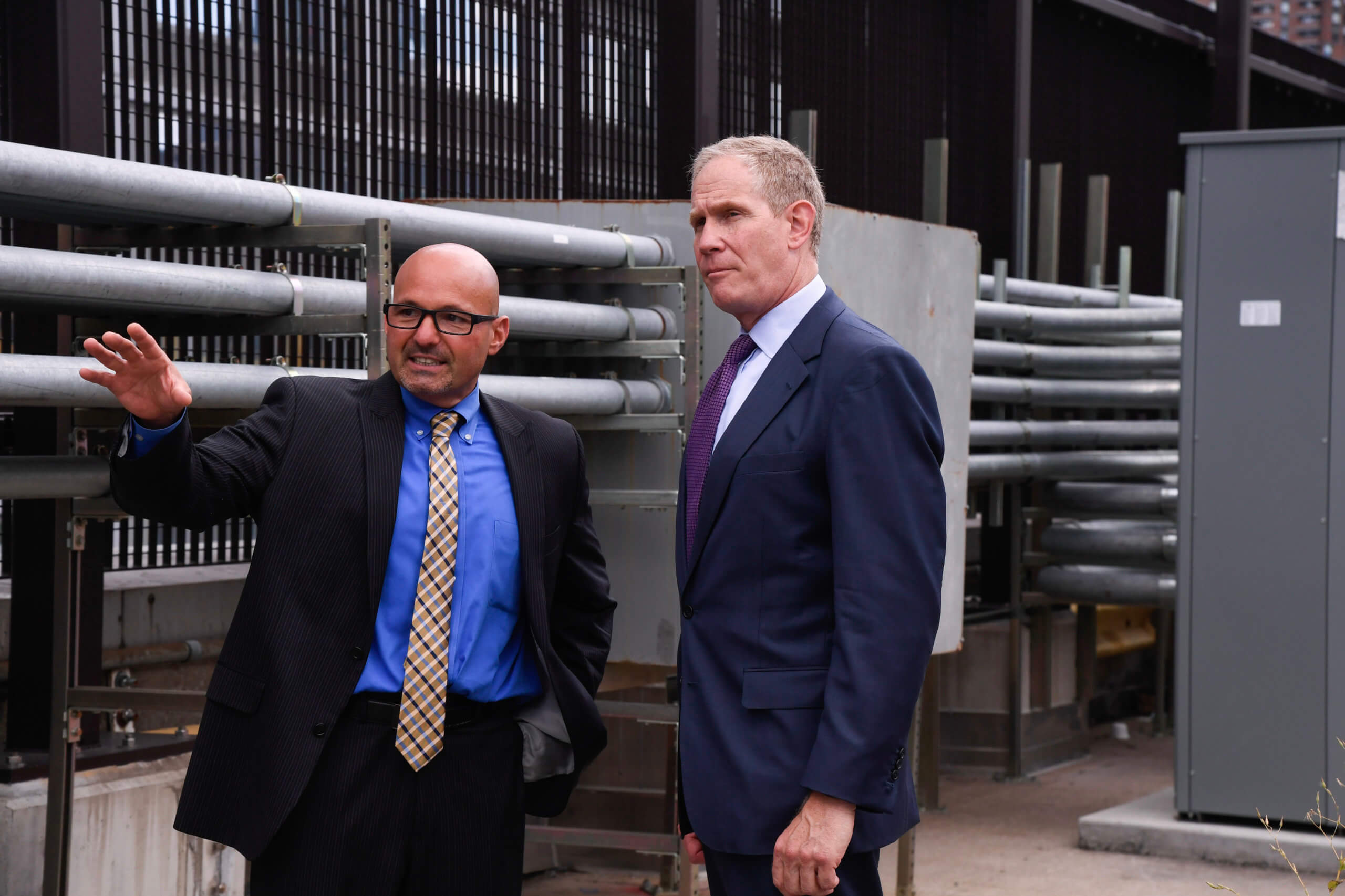
Over in municipal government, Department of Transportation Commissioner Polly Trottenberg left for greener pastures in Washington, D.C., as Deputy Secretary of the US DOT and Mayor Bill de Blasio appointed loyal political donor and retired intellectual property lawyer Hank Gutman to the job overseeing the city’s sprawling streetscape.
Gutman will be replaced by uptown Councilmember Ydanis Rodriguez, whom incoming Mayor Eric Adams tapped for the head of DOT on Dec. 20.
Carnage in the streets
New York City’s roads did not get safer in 2021 with traffic killings breaking records for the de Blasio administration several times this year, casting doubt on Hizzoner’s signature Vision Zero initiative to reduce traffic deaths to zero.
In one shocking instance on Sept. 11, a reckless driver in Clinton Hill, Brooklyn, mowed down a family, killing 3-month-old Apolline Mong-Guillemin who was being pushed in a stroller by her mother. The mom also suffered critical injuries in the collision along with another man on the scene.
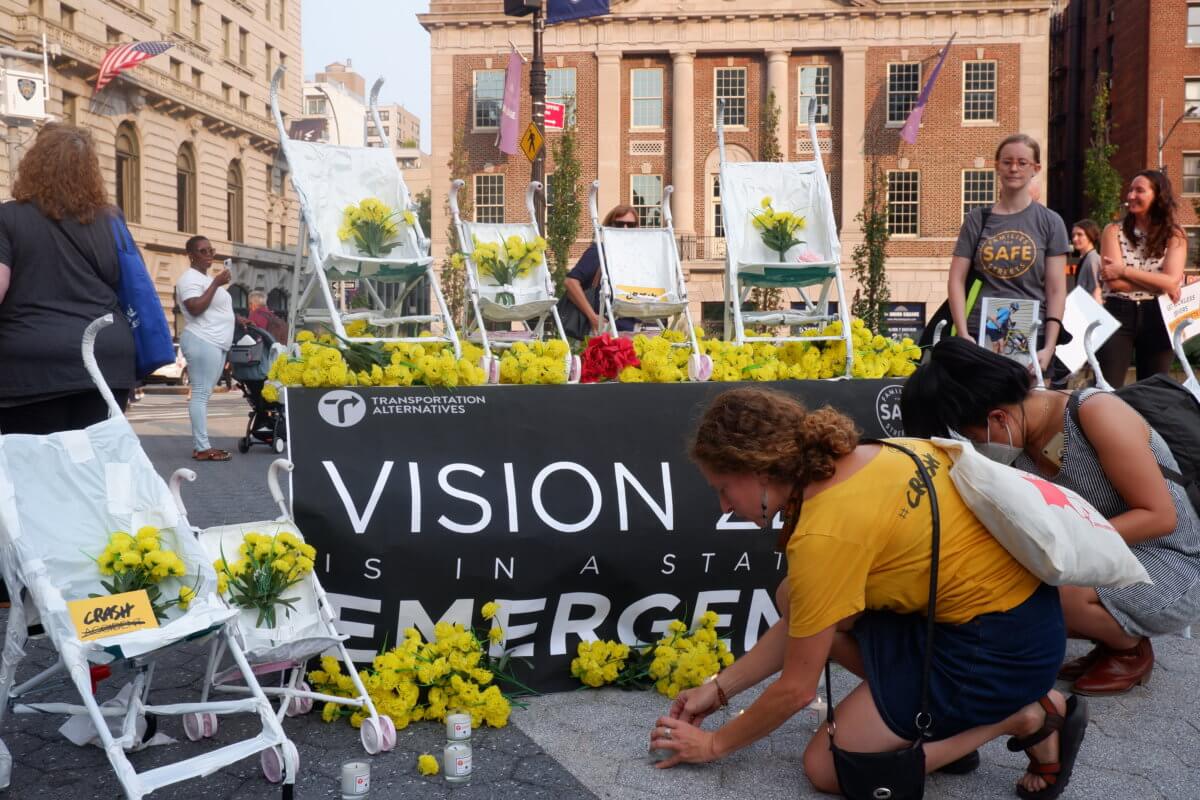
The year logged the deadliest first six months, summer, and first nine months of any year since de Blasio took office in 2014, but the mayor maintained that the pandemic was to blame and that the last two years were been “aberrant.”
“It’s an extraordinary success that’s been, unfortunately, upended by two years of aberrant reality from a global pandemic,” de Blasio said on Sept. 30 when asked about his legacy. “So, we’re going to get it back on track. We’re going to save a lot of lives and over time, I think we can get to a very, very different place by really consistently applying the Vision Zero principles.”
During a November vigil for the 1,800 people who died on the streets during de Blasio’s tenure, a representative for Adams pledges to plant a memorial grove dedicated to victims of traffic violence.
Big build
Despite political turmoil in at the Governor’s Mansion, the state continued pushing major transit infrastructure projects through 2021.
Cuomo’s Moynihan Train Hall opened on Jan. 1, offering an airy new waiting room for Long Island Rail Road and Amtrak riders, but the lack of seating led to travelers sitting on the floor.
The state’s two governors roll out project to bring four new Metro-North Railroad stations to the Bronx via Amtrak’s Hell Gate Line feeding into Penn Station, sprucing up the that beleaguered transit hub and Port Authority Bus Terminal, extending the Second Avenue Subway to 125th Street, and wrapping up the decades-in-the-works project to bring LIRR service to Grand Central.
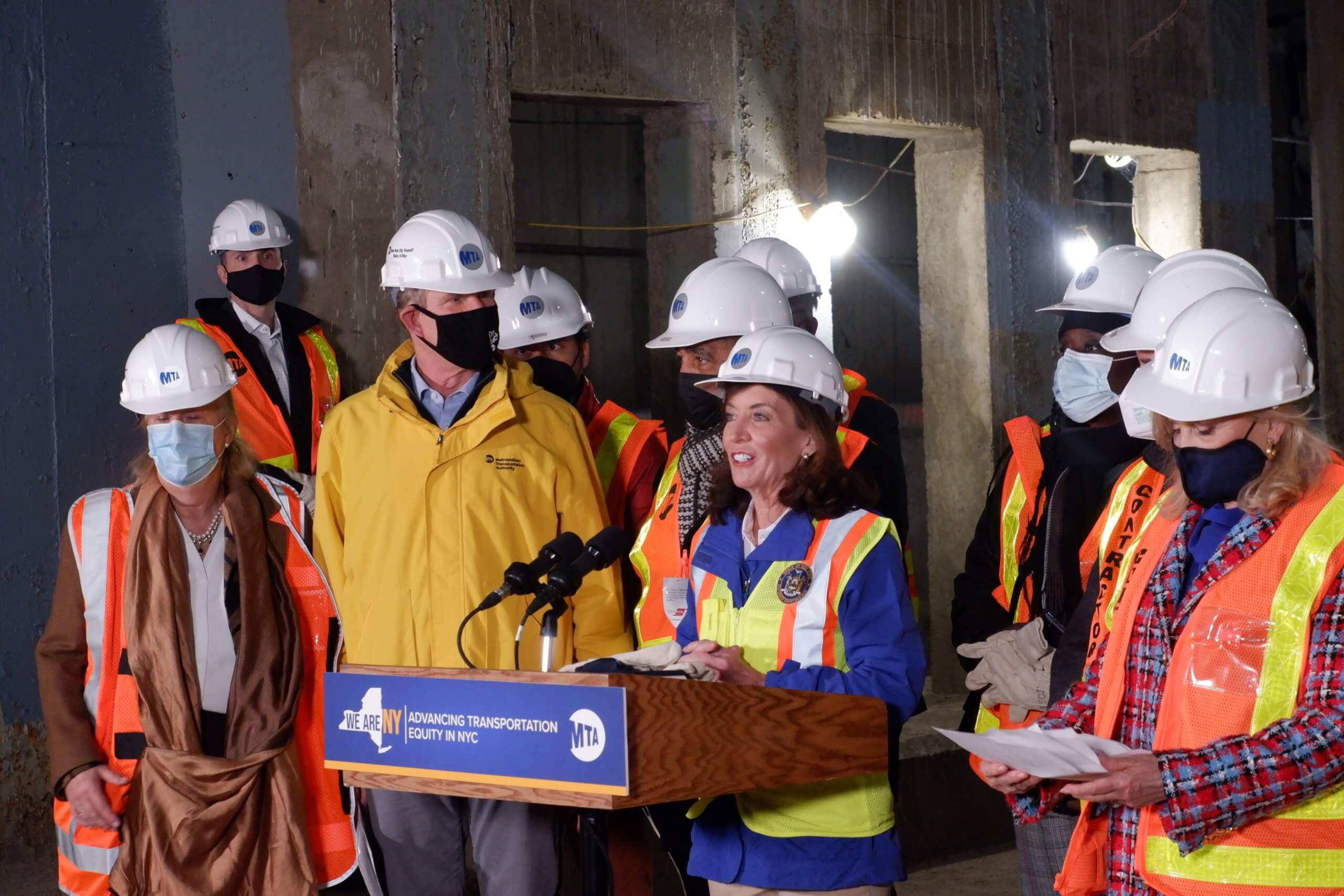
Hochul continues almost all of the initiatives launched by her disgraced predecessor, but scales back the Penn Station development deal to include a residential portion in the predominantly-commercial 10-tower complex around the station.
The one Cuomo pet project Hochul halts is the much-criticized $2.1 billion AirTrain to LaGuardia Airport, which she asks the Port Authority of New York and New Jersey to put on hold in October subject to a review by a transportation expert panel.
MTA also revived its borough-by-borough redesign of bus networks after a pandemic pause, albeit with a five-year setback, starting with the Bronx and Queens.
City schemes
Over in City Hall, Mayor de Blasio announces his plans in August for the crumbling Brooklyn-Queens Expressway: extend its lifespan by another 20 years until 2040 by reducing lanes to four and upping maintenance and monitoring — all in the hopes that someone will have figured out a solution for the complex infrastructure conundrum by then.
De Blasio also fulfills one of his State of the State promises and opens a new bike lane on the Brooklyn Bridge by taking one vehicle lane, and turning the walkway above into a pedestrian-only path, which immediately almost doubles bike crossings over the iconic span.
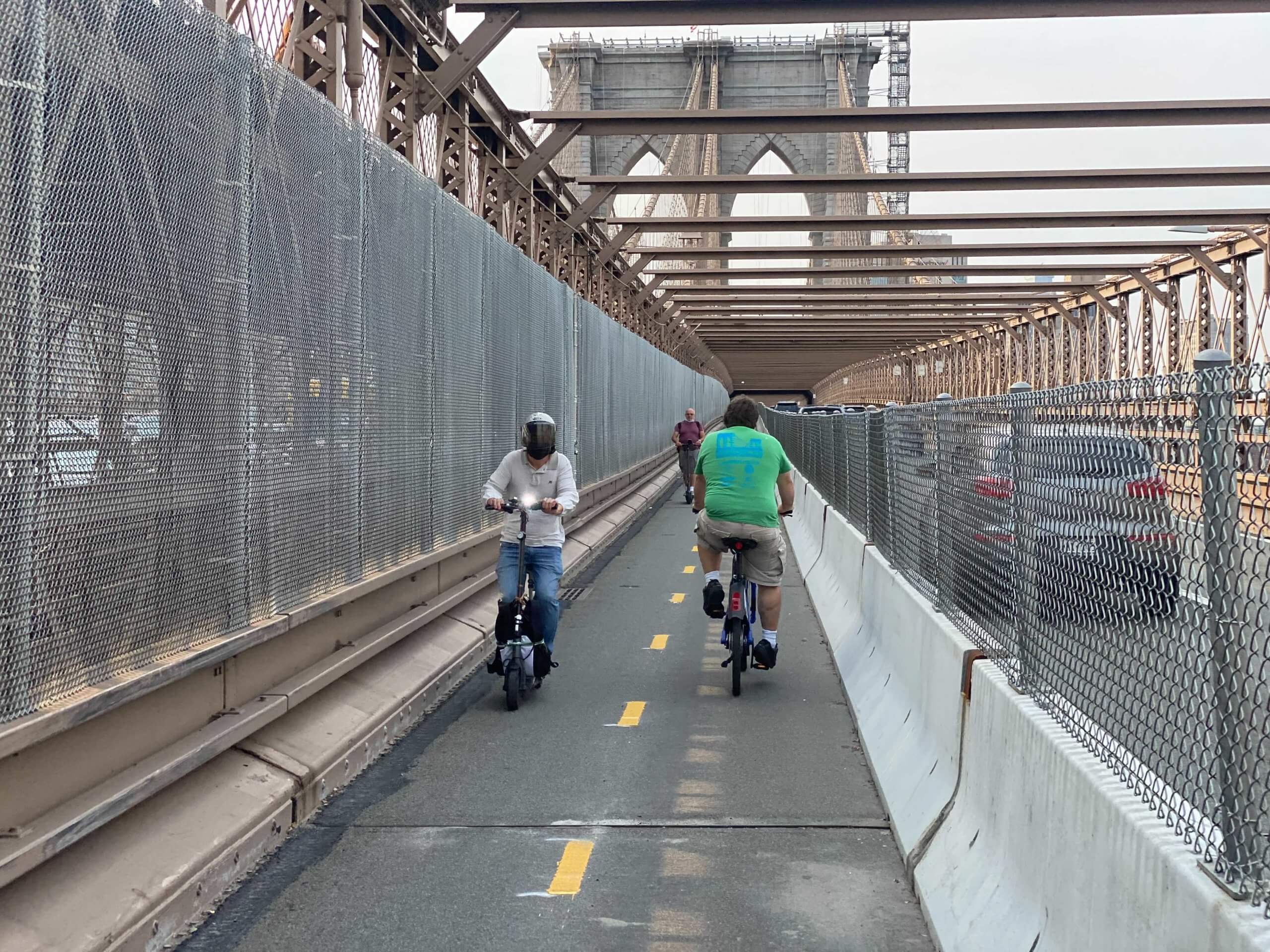
Meanwhile, the proposal to separate cyclists and pedestrians on the Queensboro Bridge will have to wait until the next mayor, as DOT did not want to inconvenience drivers any further by adding the revamp project on top of ongoing bridge renovations and shutting down more lanes.
De Blasio implements four out of five promised busways in the city, but DOT waters down and eventually punts the proposed Fifth Avenue busway to the next administration after backlash from luxury retailers and business groups on the ritzy thoroughfare.
On Nov. 15, President Joe Biden signs the long-awaited $1.2 trillion Infrastructure Investment and Jobs Act, bringing much-needed funding to the New York region, including funds to address highways that tear through communities like the BQE and the Cross Bronx Expressway.
“It’s a good step forward and certainly could allow new ideas and new approaches to get new attention,” said Kate Slevin, executive vice president of the non-profit Regional Plan Association. “It shows the federal government’s interest and intention in addressing some of the longstanding historical inequities and environmental degradation from construction of these highways.”



